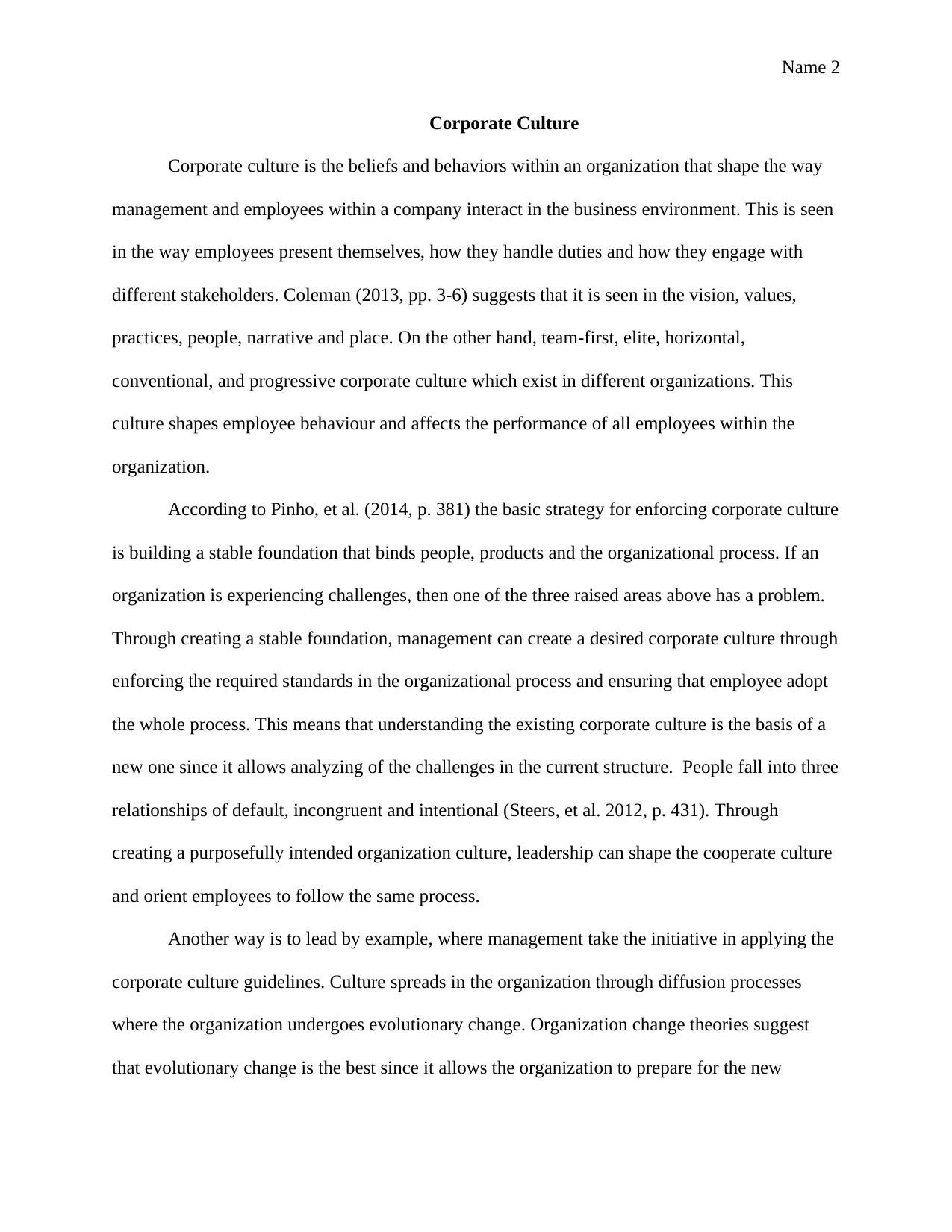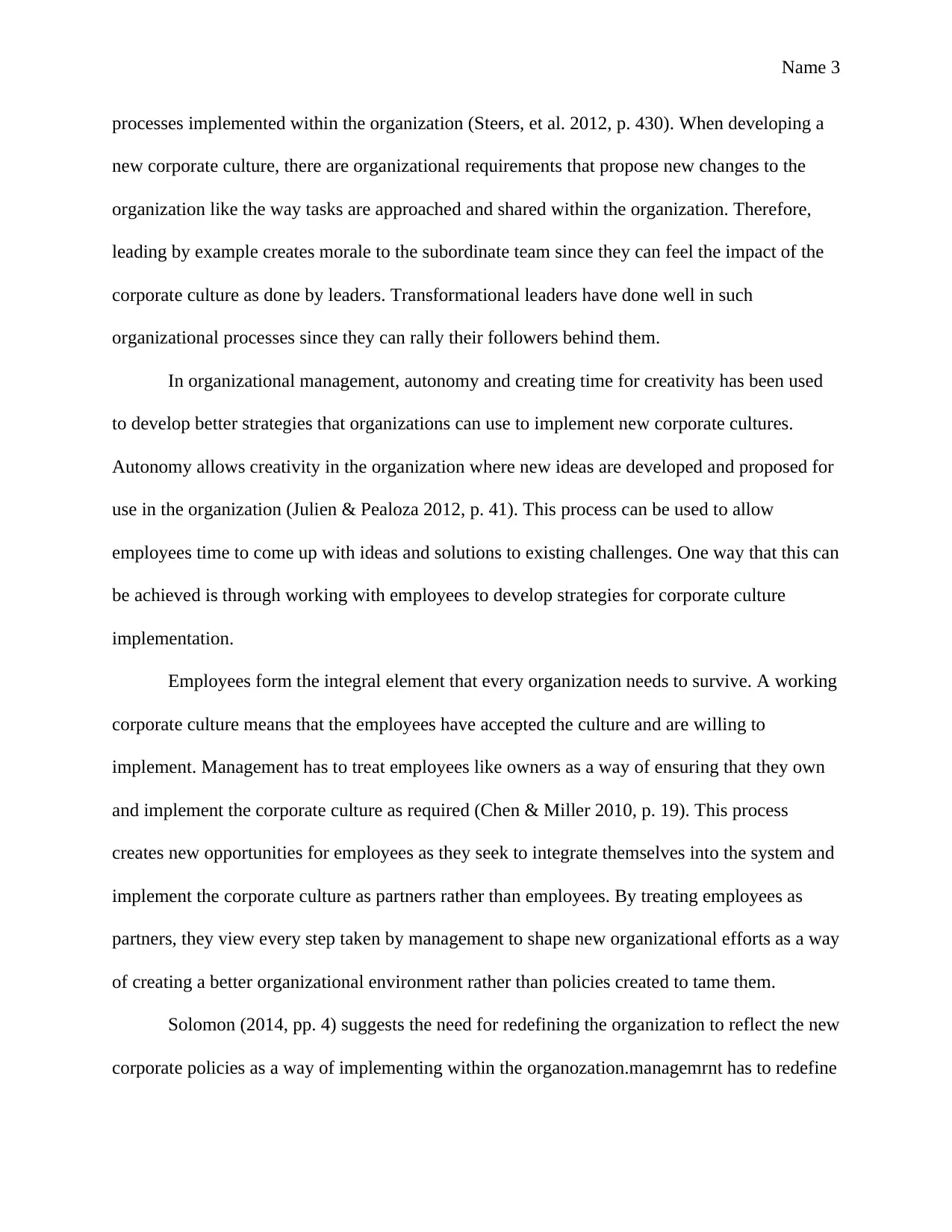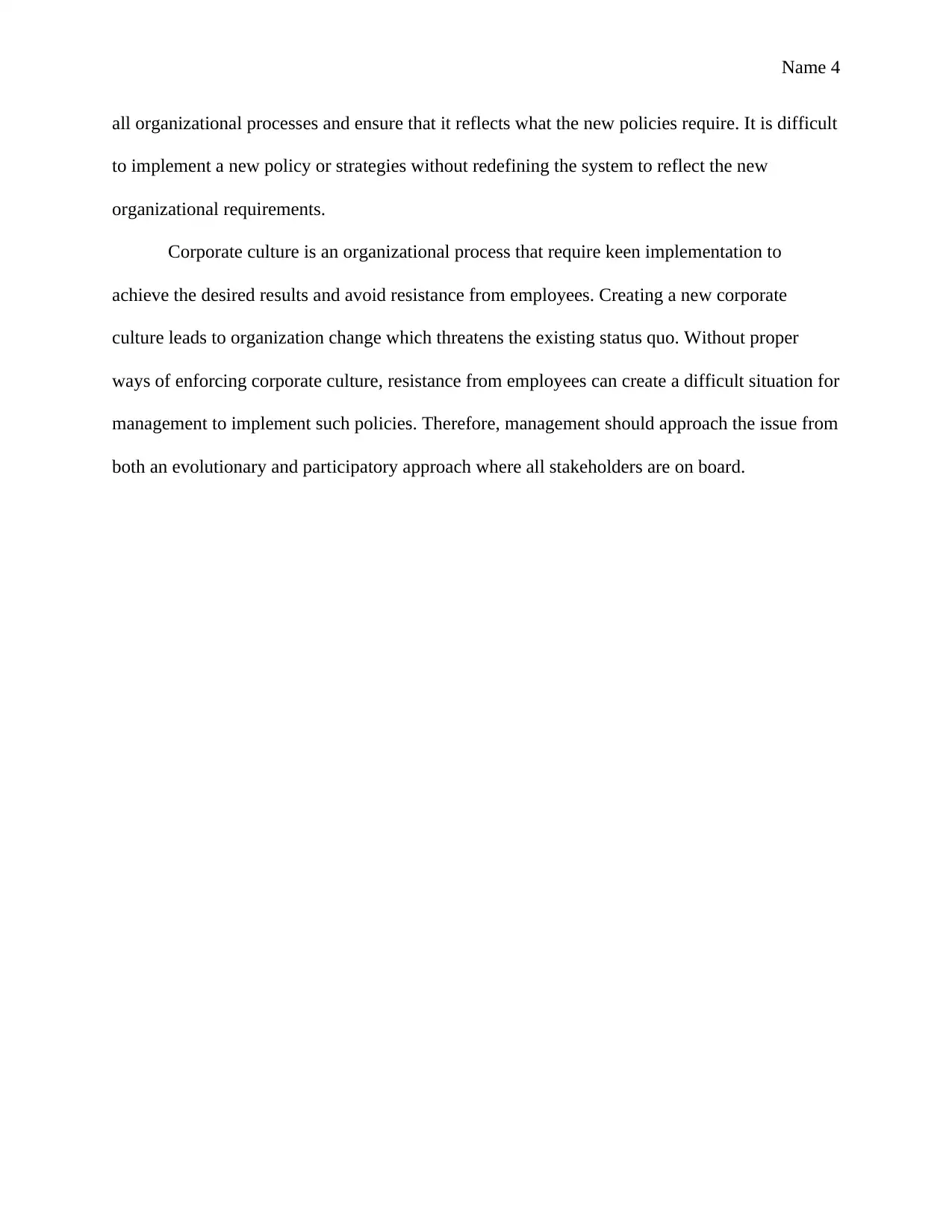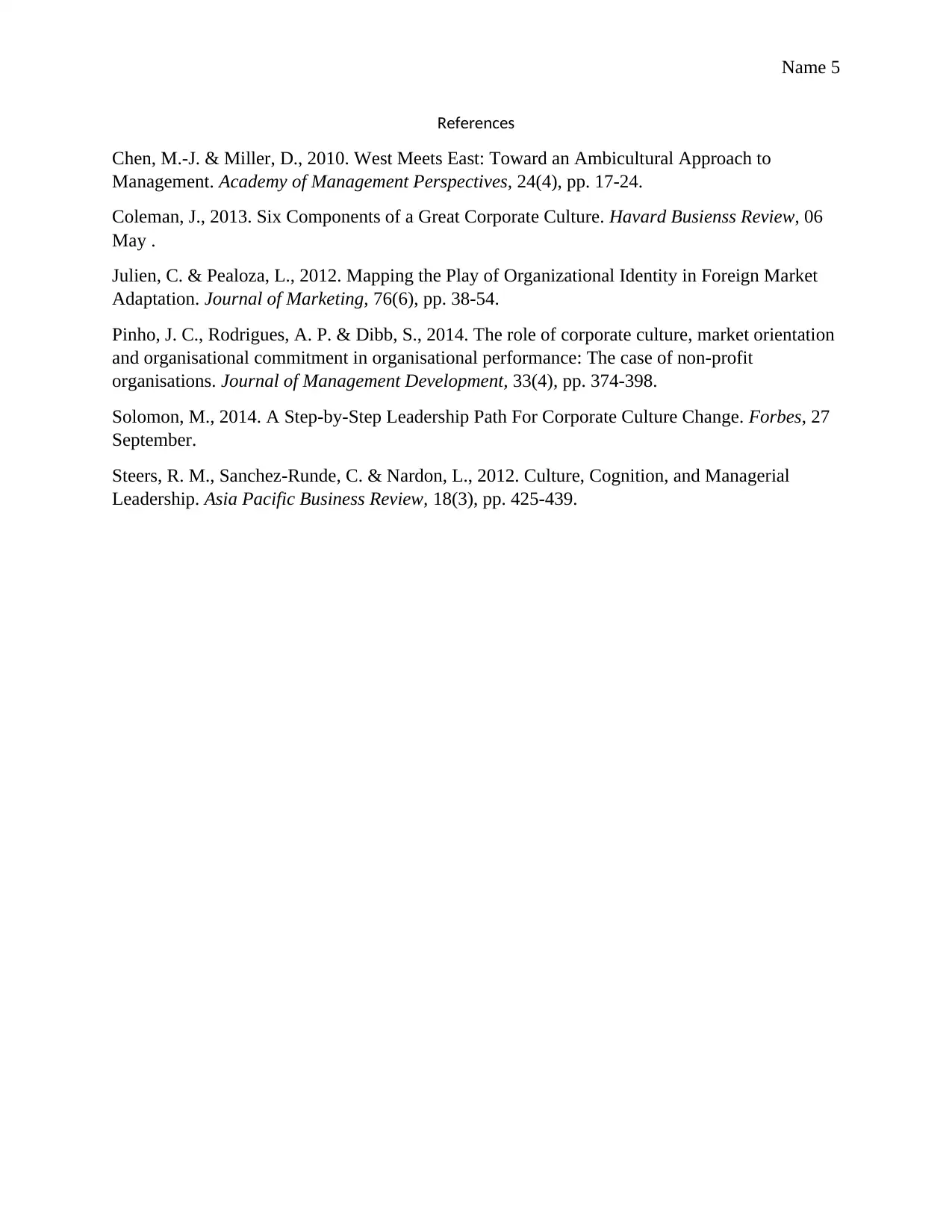Analyzing Corporate Culture and Its Implementation Strategies
VerifiedAdded on 2020/05/28
|5
|999
|81
Essay
AI Summary
Corporate culture encompasses the beliefs and behaviors that shape interactions within an organization, influencing management and employees' roles in the business environment. Key elements include vision, values, practices, people, narrative, and place. Various types of cultures exist, such as team-first, elite, horizontal, conventional, and progressive, each affecting employee behavior and performance. Strategies for implementing corporate culture involve creating a stable foundation by aligning people, products, and processes. Understanding existing culture is essential for establishing a new one, requiring analysis of current challenges. Leadership plays a critical role through example-setting and transformational approaches, promoting evolutionary change to integrate new processes. Autonomy and creativity are encouraged to develop innovative strategies, while treating employees as partners fosters acceptance and implementation of corporate culture. Redefining organizational structures to reflect new policies is vital for successful cultural integration. Effective implementation requires balancing evolutionary and participatory methods to minimize resistance and ensure stakeholder alignment.
1 out of 5











![[object Object]](/_next/static/media/star-bottom.7253800d.svg)